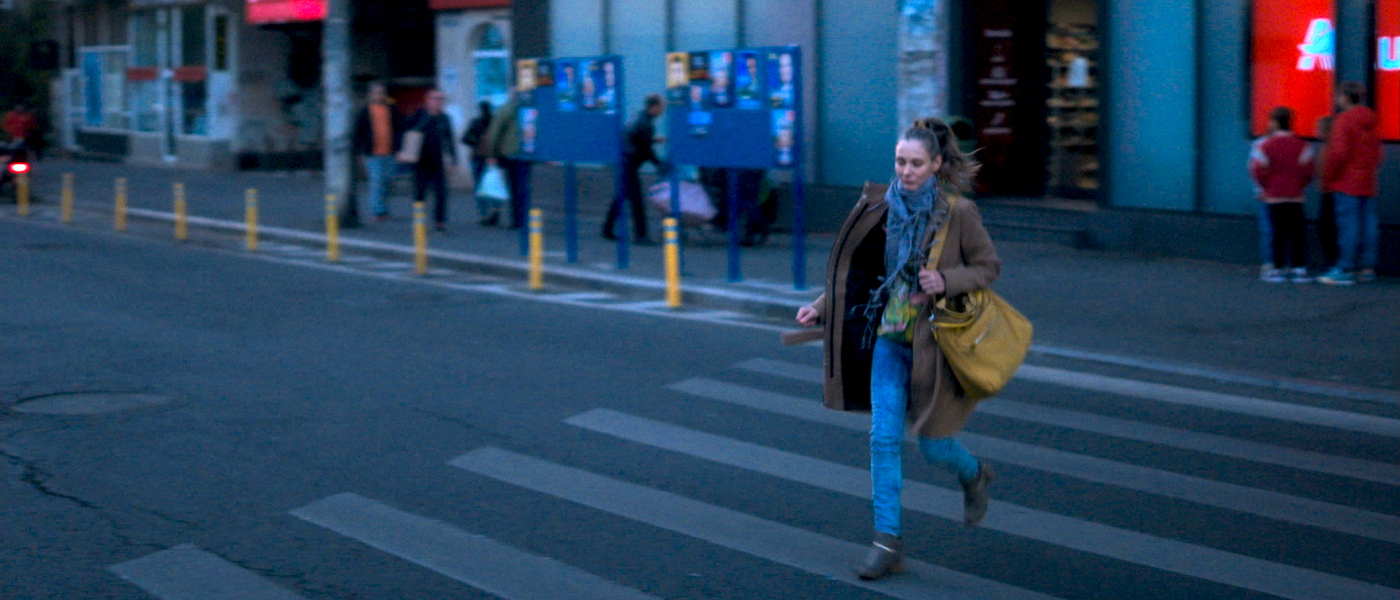Interview with Vasile Todinca, Alișveriș director
by Raphaëlle Pireyre

by Raphaëlle Pireyre
In the span of a single day, Tatiana, an unemployed young woman who looks like a fairytale princess, goes through all the neighbourhoods of Bucharest to find the money she needs to pay her rent. Under the watchful eye of surveillance cameras and surrounded by posters glorifying easy money, she meets a series of characters at breakneck speed, keeping pace with Mozart’s Turkish March, which drives the opening credits. A lively, shimmering social comedy, Alisveris elevates a shopping list into an aesthetic adventure, blending 18th-century vanitas paintings with the visual language of advertising.
Interview with Vasile Todinca
Hair braid and financial problems
The hair braid played significant roles in history, mythology or literature, being a symbol of social status, femininity, or even strength, hinted here by the evocation of Samson. But this particular story has its origin in a real life event. A few years ago, while waiting in line in a supermarket, I saw a woman asking the cashier if she could weigh a hair braid she was wanting to sell. I couldn’t help seeing the absurd side behind this desperate gesture, because it is also a bit weird. Maybe I was able to see this image properly because I myself was in a bit of a tight spot financially. It is a personal film, in a way.
The Still lives shots
Tatiana’s life revolves around her objects and all kinds of advertisements (jobs, money making methods, online markets). The DOP Marius Panduru referred to the still lives of Chardin. Quite coincidentally, I read at that time an essay by Marcel Proust on the French painter, Chardin: The essence of Life about the ability of the artist to see the beauty in humble scenes or ordinary things. These objects deserve this setting because they keep Tatiana afloat. I took still shots from advertisements in the streets with my personal phone. I want to play with the medium and have something old and something really new.
Profound subject, Playfull tone
I wanted to be as distant as I could from the characters without abandoning them, so I used exclusively wide angles. It gives, with the simple acting, this playful tone. I didn’t want to force more dramatism than the story already has. As Chaplin said : « Life is a tragedy in close ups and a comedy in long shots. » The colours also play a role in the tone : I love neon lights so we had to use them somehow! I’m really glad they created quirky spaces like the pawn shop with its purple lights. I wanted to drift away from the Romanian aesthetic of telling marginal stories about poor people in sort of a grayness. You can tell a sad story with warm colors too.
Surveillance cameras
Having many locations allowed me to also touch a bit on the theme of social differences. During location scouting, it came up that almost every place was surrounded by surveillance cameras. This is how the panopticon gaze idea came about. Tatiana is watched all the time and it shows the social differences amongst characters. In the cake shop, the seller is kind of a boss, but she is watched by the boss above her. We are all watched, somehow.